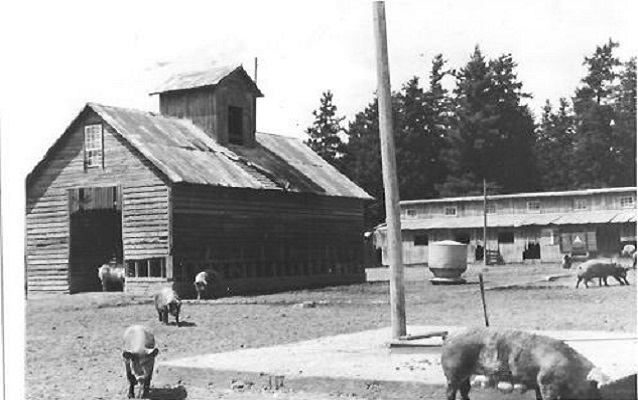Last updated: December 18, 2017
Place
High Amana Farm Complex

Photo courtesy of Amana Heritage Society
The farm complex sat clustered at the edge of each village. High Amana, like the other Amana villages, was nearly self-sufficient thanks to their farm complex. Each complex consisted of several barns, including an Ochsenstall (ox barn), Gaustall (horse barn), Füllerstall (colt barn), Kuhstall (cow barn), and a Saustall (hog barn). Lean-tos and other structures were added to the original barns to accommodate the growing needs of the community. Also included in the farm complex were machine sheds, corn cribs, buggy sheds, granaries, and other farm buildings.
Each of the seven villages had cropland, pastures, and timber assigned to it. Each farm had a manager who supervised the day-to-day farming operations, and they would report to the general farm manager. The general farm manager would assign livestock, as well as the acreage and crops each farm would produce.
Barley was an important crop to German colonists, who used large amounts in the production of beer and livestock feed. Potatoes were grown widely as they were served by the kitchen houses at every meal. Onions, another staple, were used both for village consumption as well as to sell. Rye, beets, and turnips were also prominent crops.
Not all crops were for human consumption. Broomcorn and willows were used to make brooms and baskets. Broomcorn would have consisted of less than five acres per village, and willow less than a quarter acre.
Today, farming continues to be the Amana Colonies' biggest business. Crops of corn, soy beans, oats, and alfalfa cover the Amana Colony soil and Gelbvieh, Angus and Charolais cattle are raised.
